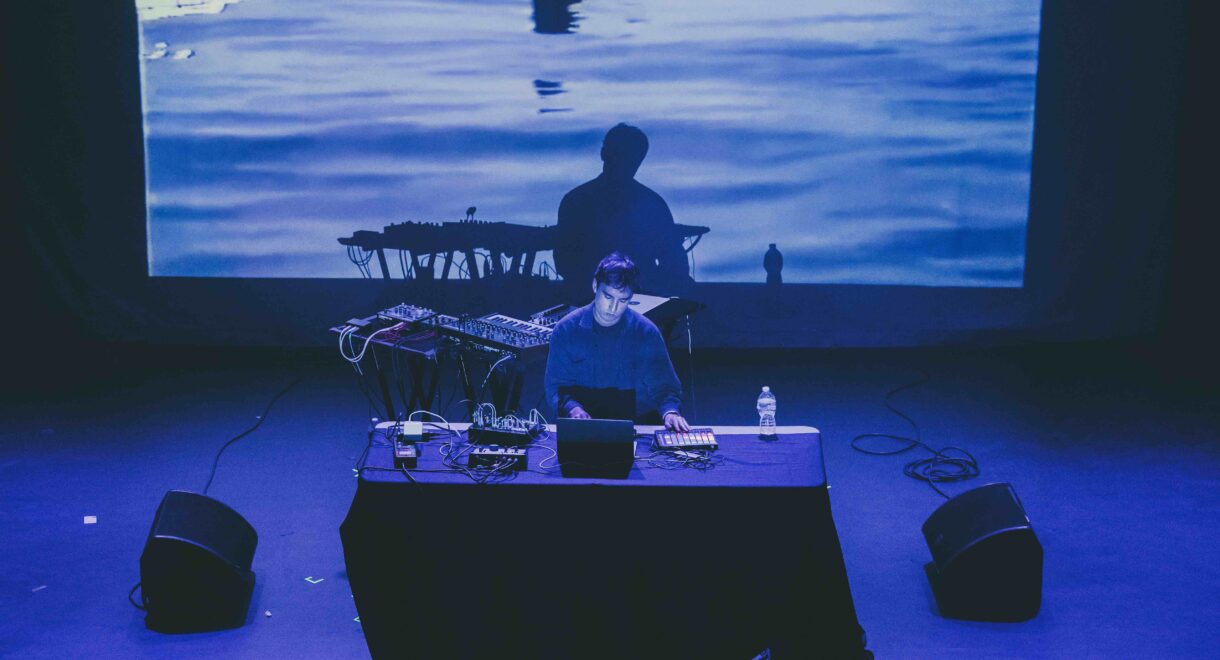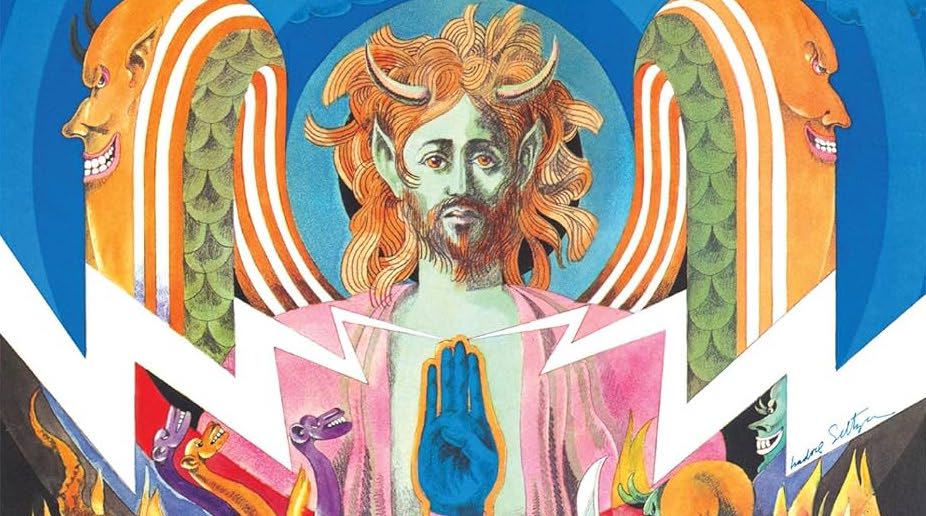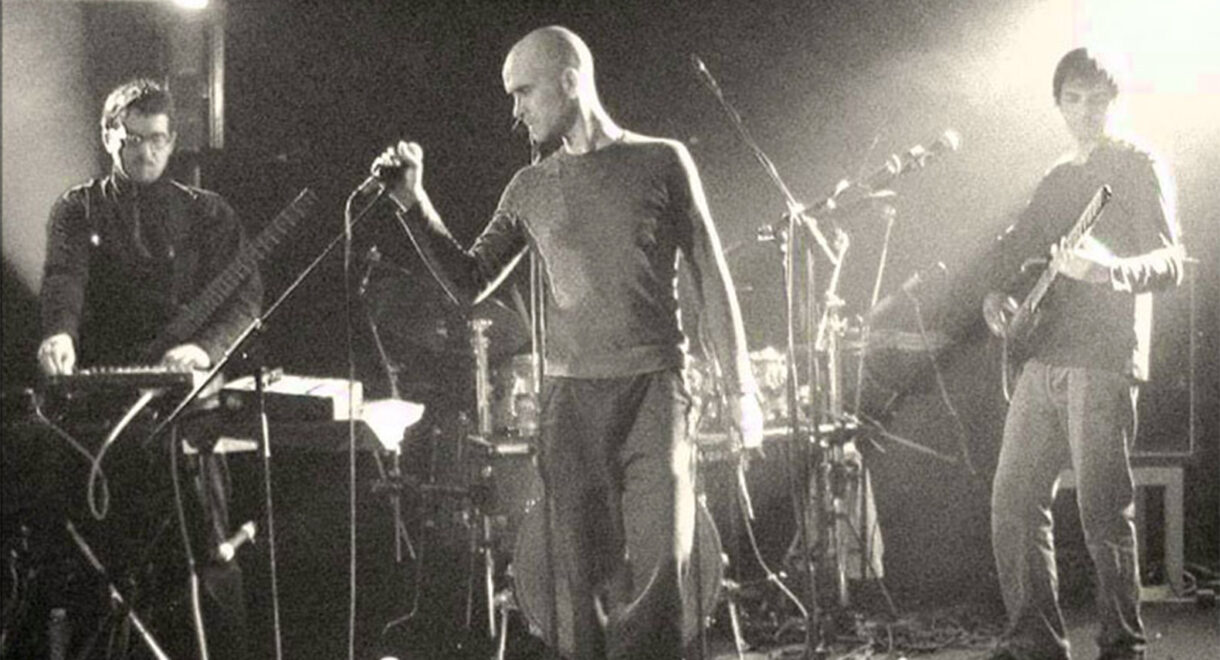Three different windows into Dylan Khotin-Foote’s music —Beautiful You, New Tab and Area 3’s View — are now in the ISC store. Some music just feels better on […]
Cabaret Voltaire and the Hacienda: Factory Records’ Radical Night

How Sheffield’s pioneers of industrial funk brought chaos, surveillance, and groove to the legendary Manchester experimental nightclub.
The Hacienda in 1983 was a cathedral in progress, a bold experiment in poured concrete, hazard-striped walls, steel scaffolding, neon light rigs, and a bar famously serving weak lager. It was still half-empty most nights, the heating unreliable, the décor arresting in its half-finished edge. But inside that raw shell of soaring ceilings and jagged beams, it felt electric, as if the space itself was daring someone to test its limits.
Into that skeletal stage walked Cabaret Voltaire. The Sheffield trio had nearly a decade of radical sound-shaping behind them. With Richard H. Kirk, Stephen Mallinder, and Alan Fisch* at the controls, CV were less a band than machinists of disruption. They’d taken their name from the Dada nightclub in Zurich, and brought that same spirit into the disruption of music: looping tape, cutting in TV static and propaganda fragments, wrestling rhythm from noise, refusing conventional song shape.
That night — August 11, 1983 — was filmed, and the setlist reads like a map through their evolving obsession with fractured rhythm and funk-steeped dissonance. They played “24 Hours,” “In the Shadows,” “Gut Level,” “Over and Over,” “Talking Time,” “Animation,” “Product Patrol,” “Crackdown,” and “The Dream Ticket.”
“Over and Over” pushed a relentless loop forward, hypnotic in its insistence, while “Animation,” from their new album The Crackdown, stitched gothic jazz-funk into something cold and avant-modulated. They looked less like a traditional band and more like audio-visual engineers in a lab. Mallinder’s vocals were filtered, dredged through effects, arriving like broadcast interference. Kirk and Watson conjured spiraling bass pulses and synth lines that threatened to dissolve into static. Overhead, video flickered — propaganda clips, grainy footage, abstract visuals — reflecting violently across those concrete walls. The Hacienda’s architecture — the unfinished surfaces, drawn edges, industrial silhouette — became a screen for their message.
The setting couldn’t have served the material better. Factory Records, with Tony Wilson and Ben Kelly, had built the Hacienda with this collision in mind. Not slick, not polished, just enough rawness and scale for something like Cabaret Voltaire to not only play but manifest its message in space. The performance felt immersive not through comfort but through confrontation.
In retrospect, this performance was a cradle for future cultural currents. CV’s brutal grooves bled into industrial dance scenes from Belgium’s Front 242 to Chicago’s more abrasive house offshoots. Their looping and splicing laid groundwork for sampling culture. Their entwining of sound and image prefigured the multimedia sets that became standard once technology caught up.
But none of that was certain that evening. Cabaret Voltaire were still outsiders, Factory was still pinching pennies on its architectural fairy tale, and the Hacienda was still carving its myth — not yet the world-renowned Mecca of dance culture it would become later in the decade.
That performance stands as a collision: a band building disorientation into rhythm, a club daring to be art space and ritual hall, a city restless for both politics and release. At that moment, the Hacienda was not yet legend, but Cabaret Voltaire rattled the walls into promise. Their loops might not resolve, but they prophesied a new way nightlife could feel.
*UPDATE: As one outraged reader noted Instagram, “Randall Roberts @liledit should be embarrassed for thinking Chris Watson was still with the band for that 1983 Haçienda live performance you posted the video of. The band that night was Mal, RHK and Alan Fisch on drums. Chris Watson left Cabaret Voltaire in October of 1981.”
We have corrected the post, and Randall Roberts is, indeed, embarrassed.










